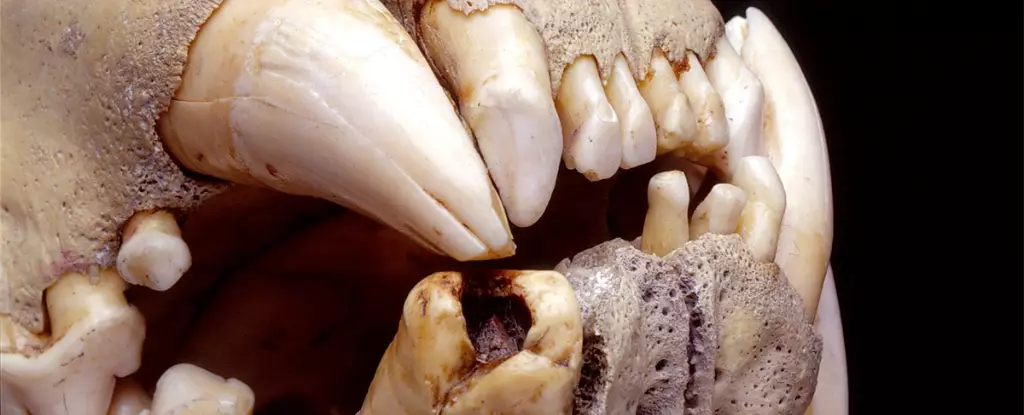The narrative surrounding the notorious man-eating lions of Tsavo, which occurred in late 19th-century Kenya, remains one of the most haunting and emblematic tales in wildlife history. These two male lions, shrouded in myth, allegedly claimed the lives of numerous railway workers, prompting a massive hunt led by British engineer Lt. Col. John Henry Patterson. Although the sensationalism surrounding these events has generated some audacious theories over the years, recent scientific scrutiny using advanced DNA techniques is shedding new light on the lions’ peculiar behavior and dietary patterns. The implications of this research not only challenge the clarity of historical accounts but also offer insight into the ecological factors that may have driven these apex predators to prey on humans.
The backdrop of this tragedy can be traced to March 1898 when construction workers were engaged in building a bridge over the Tsavo River. Recruited mostly from India, these laborers lived in camps along the construction site. Initially, reports regarding lion attacks were met with skepticism by Patterson; however, the grim realities soon unfolded as individuals began to disappear into the night. Notably, the lions exhibited alarming behavior, launching attacks with increasing audacity and even working in tandem. While observers initially attributed the attacks to their predatory instincts, a deeper examination reveals that ecological disruptions may have profoundly influenced their newfound taste for human flesh.
Assessing the true extent of the lions’ killing spree has proven to be a difficult task. Estimates of fatalities range dramatically—while some claims suggest as many as 135 were claimed as victims, a 2001 study provides a more conservative estimate of about 30 individuals. Regardless of the figure, such losses are significant and have clouded the narrative surrounding these lions and their motivations. Patterson’s campaign to eliminate the lions culminated in December of that year, when he successfully killed both individuals; yet their remains continued to harbor secrets that would lie dormant for decades.
Scientific Inquiry: Unlocking the Secrets of the Past
The chance discovery of these lions’ remains at the Field Museum of Natural History eventually spurred contemporary researchers to reexamine their narratives. Led by ecologist Thomas Gnoske, an analysis of hair sample remnants found in the lions’ teeth unveiled an intriguing collection of DNA that opened up questions surrounding their diet. Using specialized techniques to analyze ancient and degraded DNA, Gnoske and his colleagues uncovered hair samples originating from a range of ungulates, including giraffe, oryx, and zebra, but they also found evidence of human hair.
The Role of Environment: What Drove the Lions to Hunt Humans?
One critical insight gleaned from Gnoske’s research is the possibility that the lions’ predilection for human flesh may have been a consequence of ecological changes in their environment. Rinderpest, a viral disease affecting ungulates, decimated local buffalo and cattle populations during the 1890s. This drastic reduction of preferred prey forced the lions to adapt, potentially seeking alternative food sources, including the human workers who unwittingly encroached upon their territory. Strikingly, Patterson’s diaries reflected a lack of buffalo sightings during that period, implying that the usual prey density for lions had drastically shifted.
Ethical Considerations: The Human Element
Interestingly, the research team chose not to pursue the identification of human hair samples further to avoid ethical dilemmas, with concerns over potentially uncovering the identities of victims who may still have descendants in the region. This decision highlights a growing awareness among scientists to conduct responsible research that respects the local community and cultural heritage.
The story of the Tsavo lions has been a sensationalized tale often characterized by a simplistic view of man versus wild beasts. However, as contemporary research uncovers the intricate tapestry of interactions between these lions and their environment, it becomes evident that their man-eating behavior was not purely an inherent trait but rather a complex response to shifting ecological conditions. By embracing a more nuanced understanding of these lions, we can appreciate the delicate balance of nature and the unforeseen consequences of human encroachment on wildlife habitats. The analysis of the Tsavo lions ultimately enriches our understanding of predator-prey dynamics, serving as a poignant reminder that the actions of humans can ripple through ecosystems in profound and often chilling ways.


Leave a Reply